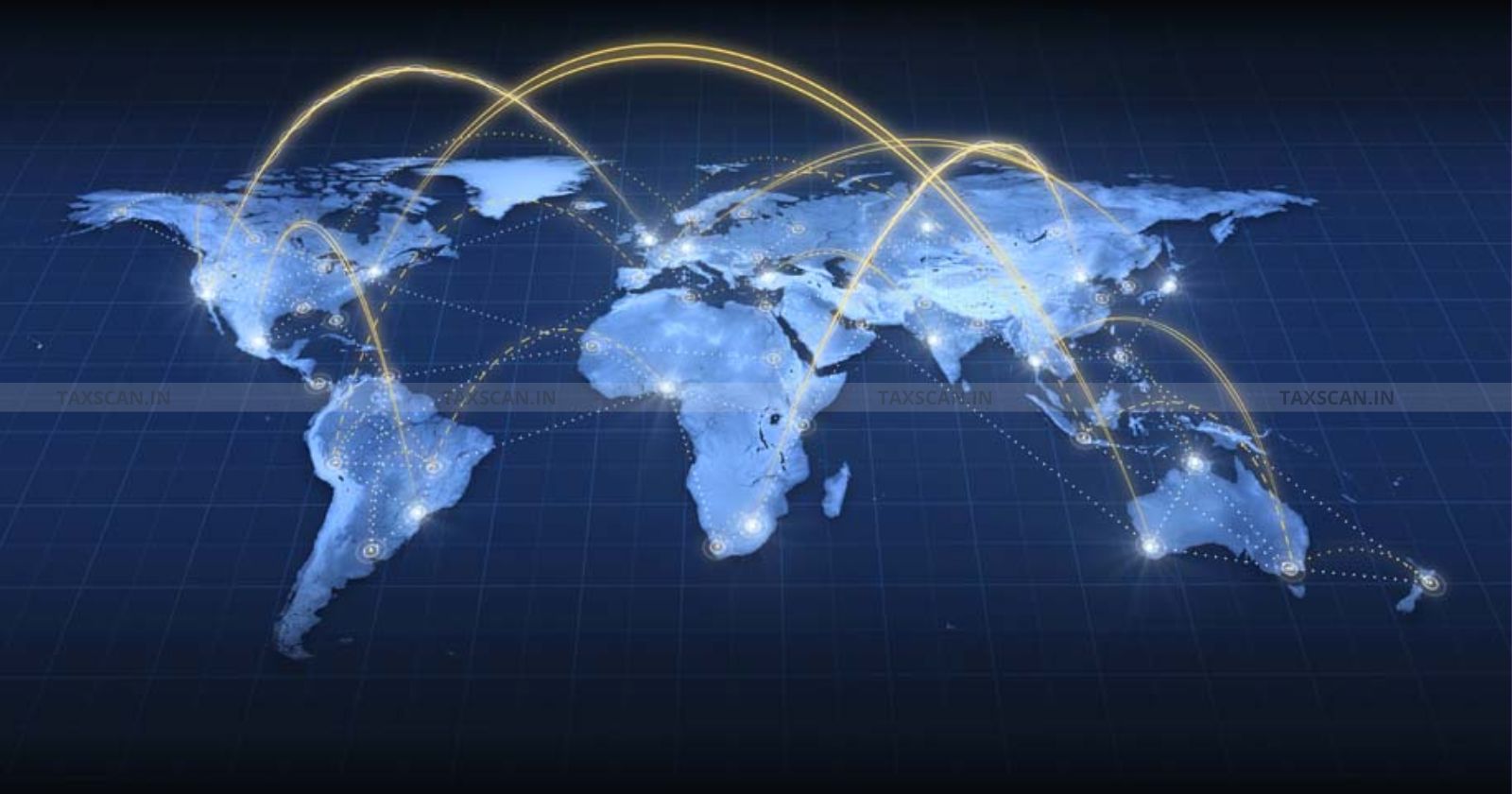Global Trade in Crisis: A Recap of Trump’s Tariffs and the World's Response
Trump’s 145% China tariff sparks global trade crisis, with China hitting back, India opting for diplomacy, and the EU responding with balanced retaliation

Trump tariffs impact on global trade – Global trade crisis 2025 – Trump’s trade policies 2025 – TAXSCAN
Trump tariffs impact on global trade – Global trade crisis 2025 – Trump’s trade policies 2025 – TAXSCAN
Introduction
In early 2025, global trade entered a phase of extreme turbulence after U.S. President Donald Trump announced sweeping tariffs under a new executive order on April 2, 2025. The policy imposed a 10% baseline tariff on all imports, with much higher rates for specific trading partners, like 34% for China, 20% for the European Union, and 27% for India, among others.
This sudden and aggressive move shook markets, with the S&P 500 dropping nearly 5% the following day. Later, Trump introduced a 90-day pause for most countries (excluding China) on April 9, offering temporary relief, but the damage to global confidence was already done. We'll take a detailed look at how major global players are responding to what many are calling "Trade War 2.0."
Become PF & ESIC Pro: Basic to Advance Course - Enroll Today
India: Diplomacy Over Retaliation
India, hit with a 27% tariff on its exports to the U.S., has opted for diplomacy rather than direct retaliation. The government is currently assessing the impact, particularly on sectors like diamonds and aquaculture, which employ millions and rely heavily on U.S. markets. Relief came as the additional 26% tariff was suspended until July 9, leading to a surge in India’s stock markets and the rupee.
Read More: President Trump Pauses Reciprocal Tariffs for 90 Days but China not Included
Despite concerns, India is holding onto its growth forecast of 6.3%-6.8% for 2025-26, although analysts have slightly downgraded projections to 6.1%. Leading economists and trade experts have called India’s non-retaliatory, negotiation-driven strategy "smart and strategic," giving it a diplomatic edge compared to more aggressive nations.
Indian exporters, especially from the seafood and IT sector,s have welcomed the temporary tariff freeze but remain cautious. TCS, the country’s largest IT firm, warned that U.S. trade policy uncertainty is hurting client sentiment and delaying projects.
European Union: A Mix of Retaliation
The European Union, facing a 20% general tariff and 25% on steel and aluminum, has combined retaliation with negotiation. On April 9, all EU states except Hungary voted to impose €26 billion in retaliatory tariffs targeting symbolic U.S. products such as almonds, yachts, and cars. These countermeasures take effect on April 15.
Read More: Faceless Income Tax Appeals Gain Major Boost: 85K Disposed in FY25, RTI Data Reveals
President Ursula von der Leyen has also indicated that the EU may tax American tech companies if negotiations fail, signaling a readiness to use digital regulation as a trade weapon. French President Emmanuel Macron called the 90-day pause a “fragile relief,” emphasizing that tariffs on steel, aluminum, and other goods still remain. The EU continues to advocate for a balanced deal, proposing a “zero-for-zero” industrial tariff agreement with the U.S.
Become PF & ESIC Pro: Basic to Advance Course - Enroll Today
China's Aggressive Retaliation
China, the main target of Trump’s tariffs, responded with strong retaliation. On April 11, Beijing raised tariffs on U.S. goods to 125%, matching Washington’s move. It also stepped up export controls on rare earths, blacklisted U.S. firms, and called for economic alliances to resist what it called “unilateral bullying.”
President Xi Jinping urged the European Union to stand with China against U.S. aggression, stating that both sides must work together to “safeguard international fairness and justice.” He met with Spanish Prime Minister Pedro Sánchez and called for deeper China-EU cooperation in light of the escalating trade war.
On the ground, signs of public backlash emerged. In Singapore, a Chinese restaurant briefly imposed a “104% surcharge” on American diners, reflecting growing anti-U.S. sentiment, though the notice was later removed after backlash.
China is now working on domestic support policies and may inject stimulus to stabilize its economy, which faces an estimated 1-2% drop in GDP growth due to tariff impacts.
Become PF & ESIC Pro: Basic to Advance Course - Enroll Today
Other Countries Strategies
Beyond the major players, other countries are also adjusting their strategies:
- Canada has imposed 25% tariffs on $155 billion in U.S. exports, especially targeting agriculture.
- Japan called the tariffs a "national crisis" and is seeking negotiations to protect its exporters.
- Taiwan has entered into the first wave of negotiations with the U.S. to reduce a 32% tariff.
- South Korea and Mexico are racing to secure exemptions. Mexico, hit with 25% tariffs on non-USMCA goods, is under pressure.
- UK and Australia are focusing on bilateral trade deals, though their responses are still unfolding.
- Southern African nations, benefiting from the AGOA preferential deal, are under threat as Trump imposes 10% universal tariffs and 25% on car exports, jeopardizing key industries like textiles and automobiles.
- Sri Lanka, still recovering from its economic crisis, is facing uncertainty as the IMF warns that U.S. tariffs are a fresh “external shock” to its fragile recovery.
Experts Opinion
Trade experts agree that the new tariffs will likely backfire on the U.S. by raising consumer prices, delaying investments, and prompting retaliation. The Global Trade Research Initiative (GTRI) urged countries like India to avoid full FTAs with the U.S., recommending instead targeted “zero-for-zero” deals that exclude sensitive sectors.
U.S. allies like Italy’s Deputy PM Antonio Tajani pointed out that “trade wars benefit no one,” while analysts at the IMF and think tanks like Chatham House warned of global recession risks and trade fragmentation.
At the Rising Bharat Summit 2025, renowned economist Jeffrey D. Sachs, Professor of Economics, offered a blunt assessment: “The US wants to use India to counter China. The entire US foreign policy is based on divide-and-conquer tactics across the world.”
Markets worldwide have responded with volatility with Asian markets plunging, the dollar hitting decade lows, and gold reaching all-time highs as investors flee to safe assets.
Become PF & ESIC Pro: Basic to Advance Course - Enroll Today
Conclusion
The world is facing a new phase of trade instability, with U.S. tariff policies at the center of the crisis. Countries like India are banking on diplomacy, the EU is mixing pressure with proposals, and China is escalating retaliation. The 90-day pause offers a brief window for negotiation but it may not be enough to resolve the deeper issues now plaguing global trade.
Support our journalism by subscribing to Taxscan premium. Follow us on Telegram for quick updates


